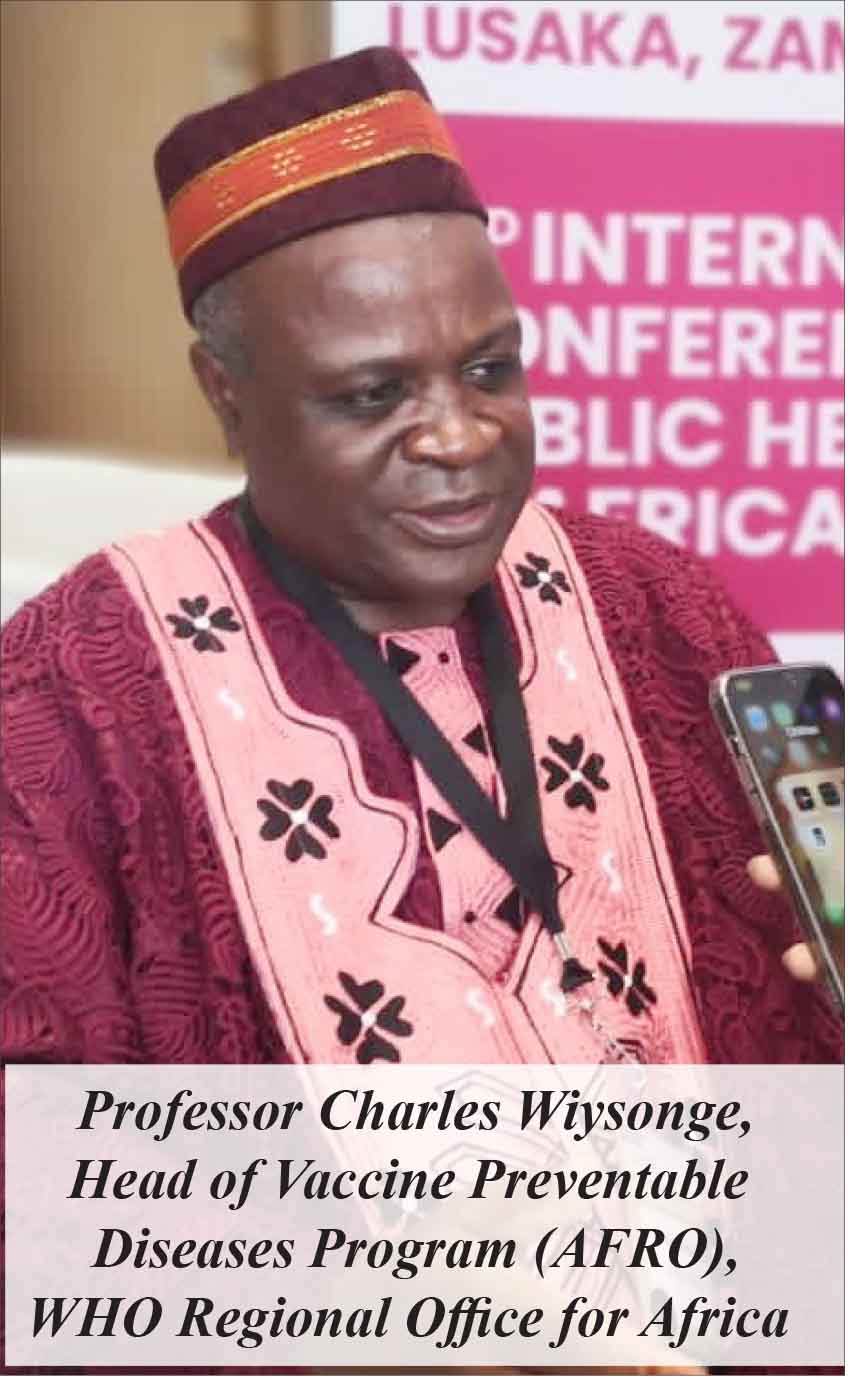By Kumba Leigh
Across the African continent, the local production of vaccine is the subject matter of different political, economic, and even social discourses. Taken as a whole, the EU is the world’s largest producer of vaccines, closely followed by India, with estimates of around 15.5 million and 14.5 million kilogrammes of vaccines produced yearly, respectively. China with production in the realm of 8 million to 12 million kilogrammes comes in third place. Africa is apparently lagging in this respect.
This article looks into the plans, preparations, collaborations, and commitments of the continent to achieving the goal of local production of vaccines.
A number of researches have proven that the attainment of Africa’s drive of its own vaccine manufacturing will have positive impact on the continent, and the world at large.
The AUC and Africa CDC, in April 2021, established the Partnerships for African Vaccine Manufacturing (PAVM) to steer a bold goal that will enable its manufacturing industry to develop, produce, and sustainably increase supply, from currently less than 1 percent.
On 03 October 2023, the Africa Centre for Disease Control and Prevention (Africa CDC), the Clinton Health Access Initiative (CHAI), and PATH released a new briefing paper, “Current and planned vaccine manufacturing in Africa,” following an assessment of vaccine manufacturing capacity in Africa. The finding indicated that African vaccine manufacturing is set to expand dramatically as the continent works to safeguard itself against future pandemics and disease outbreaks—and to ensure delays like the ones African nations faced in receiving COVID-19 vaccines never happen again.
A clear picture of gaps and needs in the current vaccine manufacturing ecosystem is necessary to ensure all stakeholders are aligned moving forward and new projects and investments can succeed.
The assessment looked across the two critical steps needed in the vaccine manufacturing process: producing the active vaccine component, or antigen, which is the most cost-intensive and technically challenging step; and producing the final vaccine, which includes formulation, fill, and finish.
The findings (Africa CDC website) show that African vaccine manufacturing capacity is heavily concentrated on form, fill, and finish, with a significant level of additional capacity still planned. If all plans are realized, capacity to form, fill, finish vaccines would more than double the projected African vaccine demand in 2030. At that level of capacity, there is a risk not every manufacturing project would be sustainable and commercially viable.
Conversely, capacity to produce antigens locally is very limited and well below the capacity that would be needed to meet regional production targets, even when capacity expansion plans are taken into consideration.
“Partnerships for African Vaccine Manufacturing was formed to strengthen the African vaccine manufacturing ecosystem and set Africa on the path to locally manufacture 60 percent of the continent’s routine immunization needs by 2040,” said Akhona Tshangela, PAVM Coordinator for the Africa CDC. “This work to map vaccine manufacturing capacity provides PAVM additional and essential clarity on how to coordinate action towards meeting that goal.”
It is however noted that to accelerate use of the robust capacity for form, fill, and finish, Africa is reliant on technology transfers from non-African vaccine manufacturers. “But there are insufficient technology transfers in place to support the majority of current and planned vaccine manufacturing capacity,” said PAVM coordinator.
Research also has it that some African vaccine manufacturers already have strong financial capabilities (the means to access financing for the facilities and operations needed to produce vaccines) but need to further develop their commercial capabilities (establishing a strategic business case to produce those vaccines). Recommendations on ways that African vaccine manufacturers can improve their odds of success include focusing on vaccines that have strong market potential and strengthening business planning.
This goal according to stakeholders can be reached through achieving sustainable and reliable economies of scale by launching mechanisms that create demand certainty for manufacturers, while facilitating country procurement.
In December 2022, the Gavi Board approved a plan to support the development of a regionally diversified vaccine manufacturing ecosystem, based on three pillars: support for strategic antigen selection by manufacturers, countries, and market shaping and demand creation. The initiative, supported by the African Union, Africa CDC, G7 and other stakeholders, also envisages the possibility of a fourth pillar, the design of a new financial instrument in the form of an Advance Market Commitment (AMC) for African vaccine manufacturing.
According to Africa CDC Director General, Dr. Jean Kaseya, global COVID-19 pandemic and climate change impact have jeopardised the health, security, and livelihoods of people across Africa and impeded the progress made over the years in reaching over 400 million children with vaccines; and averting more than 9.9 million future deaths on the continent. The major focus of this new agreement is forging new and strengthened partnerships to reach the millions of “zero-dose” children, particularly in marginalised settings, that still lack access to vaccines, and other essential services in addition to providing a concrete framework for the AUC and Gavi to jointly address these challenges, identify gaps, and monitor progress to achieve universal access to immunization, and drive positive impacts on the continent.
PAVM’s Tshangela affirmed that need to move from 1% of vaccine production for the continent to 20% by 2040. The best way to do that, she indicated, is ensuring that our youth are fully sensitized, and make them realize the need for having self-reliant health system in the continent, noting that 60% of Africa’s population is less than 25 years old.
She empahasised that in order to ensure the local production of vaccine, there is the need to quadruple capacity building, and the overall workforce in the continent; “and the best way to implement that is to engage in training of the youth, so that there will potential of job creation, health security, and economic growth across the overall vaccine manufacturing ecosystem”.
Simone Blayer, PhD, PATH’s Global Head of Chemistry, Manufacturing, and Controls, and Nonclinical Toxicology said “This analysis offers critical insights for understanding how to move forward, while preventing under- or over-investment.”
Banard Appiah, Pharmacist, Public Science Expert, Syracuse University, explained the strenuousness in the responsibility of pharmacists in vaccine production; thus emphasised capacity building.
He explained that “pharmacists who are into vaccine production are called ‘Active ingredients’, because they are into medicine production, and going through the process of manufacturing also requires adding some ingredients to the medicine, the amount to mix to complete its medicinal value, and consumption; these are as well industrial pharmacists.
The concrete steps
The Africa CDC is working with African Union Member States to support the procurement of African-made vaccines and prioritize activities that will help local vaccine manufacturers meet the PAVM 2040 goal. CHAI is working with key stakeholders to develop an integrated set of high-impact market-shaping interventions and support in their execution. PATH is working with partners to develop a supply chain simulation that could help estimate the manufacturing site conditions—including types and size of future factories, workforce numbers, and types of expertise—needed to achieve the planned capacity.
Professor Charles Wiysonge, Head of Vaccines Preventable Diseases Programme (AFRO) WHO Regional Office for Africa, in an interview spoke about the African Vaccines Regulatory Forum - an alliance of all the national regulatory authorities, and ethics committees across Africa to ensure all the regulatory structures, and frameworks, and the capacity to be able to regulate vaccines is of quality, so that any vaccine made in Africa is verified.
“We need to reinforce our capacity around people who are into vaccine regulatory forum and vaccine production including the ethics committees in ensuring they have the capacities they need to verify the production of these vaccines to make sure they are of the highest quality.”
The Confidence & Optimism
WHO’s Head for Regional Office expressed optimism of the initiative of producing 60% Africa’s vaccines by 2040, saying with the great collaborations with Africa CDC, African Union, and other partners is possible, because they have the structures in place through Africa’s innovators, with the help of technology.
Dr Wondimagegnehu Alemu, Africa CDC United States, expressed confidence in Africa’s drive of the vaccine production for Africa. “I have 40 years working in the health service; I am very much impressed with the zeal in young people, their professional commitment, capability, the collaborations, and the ability to work across agencies, and possibility of networking across the continent.”
He said mechanisms are being put in place to ensure that in the course of vaccine production there is no short-cuts, “and we will make sure during the manufacturing whosoever is engaged in the process follow the protocols, but this will not happen in one or two years, because it requires political, finance, and capacity support.”
The initiative to produce medicine in Africa is a bold move, yet there are few challenges such as governments’ commitment to support local pharmaceutical manufacturing industries in Africa to be able to compete internationally; yet pharmacists are highly involved in vaccine production and medication in general. Manufacturing of drugs require utilization of new technologies; thus, there has to be a means of technical training to ensure efficiency and effectiveness.
Experts observed that with vaccine production, there is the need to have a careful identification on the specifics of whether the drug is new, or is an existing one, so that there will be better specifications for the need for whether or not it requires clinical trials, researches, and the investment.
Regardless of the challenges Africa is ostensibly committed to be in charge of its own destiny as far as vaccine manufacturing is concerned.






